A day at the Gravel Pit
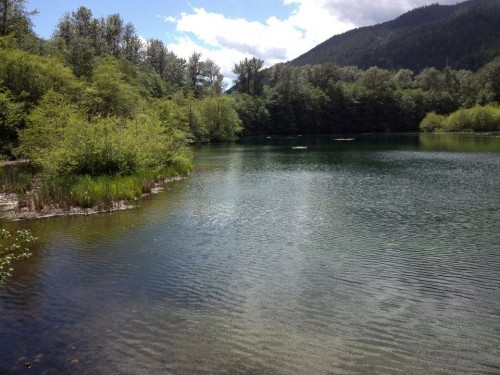
I live in a stunning place. On clear days, slate colored mountains capped in white meet blue skies in a crisp line and from there melt into a maze of light green meadows and dark green stands of trees until they reach the emerald lake. On days with low clouds, fog lingers between the trees in a tranquil embrace of hills and peaks. The lake echoes with the call of a loon, and in spring the forest bursts with the song of Swainson’s Thrush, Pacific Wren, and Yellow Rumped Warbler. Just outside my window, I have been graced by Pileated Woodpecker, Black Bear and American Marten.
Picture now a gravel road leading to a gravel mountain next to a gravel pit filled in with water seething with mosquitos and smelling of detritus. Why, you might ask, would someone who lives in the shadow of Sourdough mountain with American Martens as playmates and the soundtrack of a Swainson’s Thrush consider leaving to spend an afternoon in such a place? The answer to your question is glorious amphibians. Cold-blooded, metamorphosing, water-loving, skin-breathing amphibians. Seeking amphibians, I went to this place, and amphibians I found.
Just west of Newhalem on Highway 20, is a gravel road blocked by a gate which leads to the gravel pit. I know very little of the history of this place. All I know is that it has been passed down through the chain of North Cascades Institute graduate students and fellow amphibian enthusiasts as a good place to spend an evening with your favorite net, bucket, and guide book. So down the gravel road I went, net in hand, eating ruby-ripe Salmonberries and trying to catch butterflies along the way. After making a wrong turn, I bushwhacked to a clear, cobble substrate, icy-cold stream—an inflow to the gravel pit pond. I crossed the stream, put my numb toes back into my rubber boots, and was on my way to the pond.
Descending a sparsely vegetated pile of large gravel, perhaps 20 feet tall, I made my way to the pond and started peering into its edges. Small black dots with tails wiggled about and a few wiggled right into my net and then right into a bucket. Next came the task of identification which can involve waiting for a tiny skittish creature to poop so that you can observe which direction the vent faces. I confirmed that these were Western Toad tadpoles (they were charcoal with a translucent dorsal fin and the vent opened straight back). This was not surprising given a report from a former grad student that he had been to this pond when thousands of tiny Western Toadlets were emerging en masse.
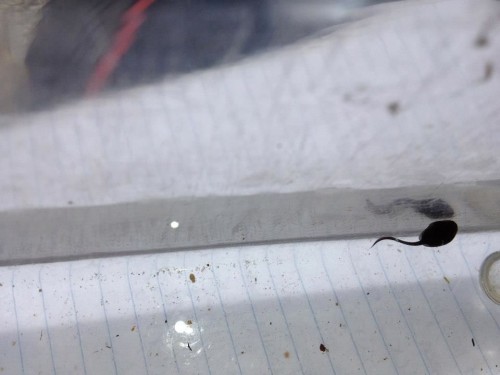 Bufo boreas (Western Toad) tadpoles
Bufo boreas (Western Toad) tadpoles
A little ways off I saw a marshy reedy area, with some muddy spots that salamander larvae might enjoy, so I began to scramble across the gravel mountain to reach my destination. On the way, I was diverted by non-amphibians. The sunny gravel pile was teeming with garter snakes. Snakes are reptiles, distinguished from amphibians by their scaly skin, lack of metamorphosis, and amniotic eggs. These were common garter snakes and as I approached, they would slither into the maze of gravel and be gone. One big snake let me get close, though, and posed for several photos before I scooped it up and held it for a few minutes.
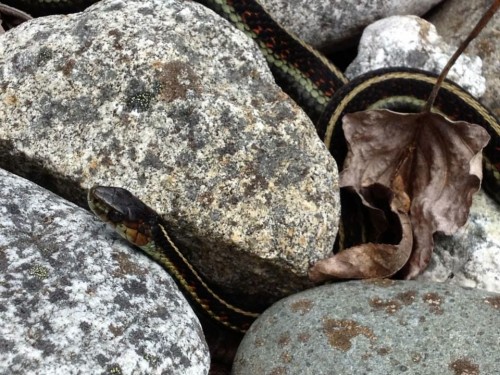 Thamnophis sirtalis (Common Garter Snake)
Thamnophis sirtalis (Common Garter Snake)
I did not find any salamander larvae in the reeds, but I did find a little fish in an outflow stream. I also found an amphibian egg mass. It was attached to some vegetation in a shady spot at the edge of the pond. Dispersed widely within the mass were about 20 tiny tadpoles that looked close to hatching. They were green and had an attached yellow yolk sack. At first I thought they might be Long-Toed Salamanders. Later, I was looking at pictures of late-stage Pacific Treefrog eggs which were identical to the ones I found. I also heard a Pacific Treefrog in the reeds.
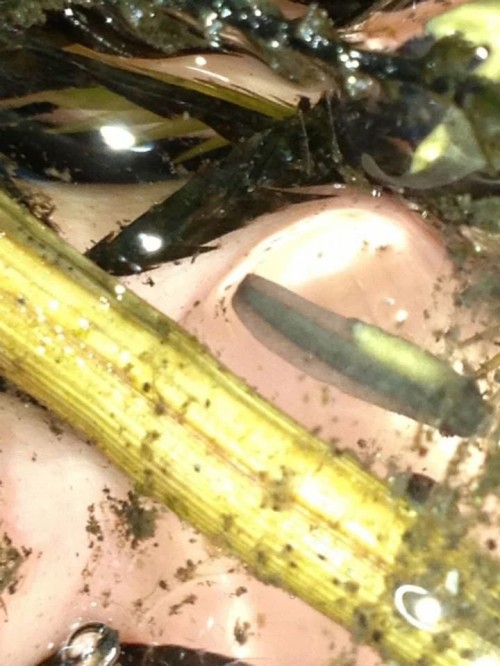 Late stage eggs of Pseudacris regilla (Pacific Treefrog)
Late stage eggs of Pseudacris regilla (Pacific Treefrog)
Covered in mosquito bites I smooshed back through the muddy reeds and scrambled again through the garter snake kingdom. This time I managed to catch a tiny garter snake who wriggled enthusiastically in my hands before slithering away into the stones. I walked along the gravel road, eating salmon berries and looking for birds. Then I got in my car to drive back to the paradise that is my home at the North Cascades Institute Environmental Learning Center, having spent a magical day in the most unlikely of places. It was a reminder that nature magic is not confined to pristine mountain peaks and old-growth forests. It can be found in roadside trenches, deserted quarries, backyard puddles, and overgrown lots. It was a reminder that, although I soon will leave this magical place I have called home for nearly a year, my exploration of magical places has only begun.
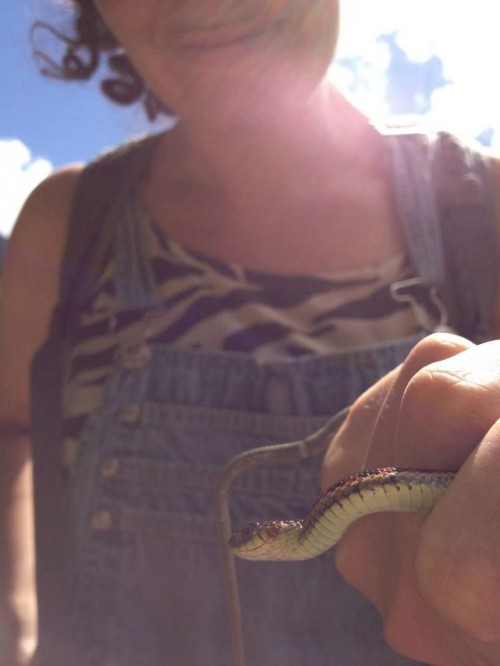 Homo sapiens (Lindsay Walker) with Thamnophis sirtalis (Common Garter Snake)
Homo sapiens (Lindsay Walker) with Thamnophis sirtalis (Common Garter Snake)
Leading photo: The Gravel Pond. All photos by Lindsay Walker
Lindsay Walker is a graduate student in North Cascades Institute and Western Washington University’s M.Ed. program. She is currently leading Youth Leadership Adventures trips with North Cascades Institute, as well as doing community and stewardship work with North Cascases Institute partner groups such as the Kulshan Creek program. As part of her coursework, Lindsay is doing a natural history project on conservation issues involving local amphibians.


This is totally Nerd-tastic… and I mean that as seriously high praise!
Do you know which snake is the longest?